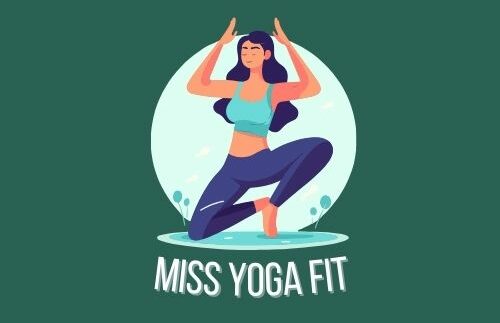Welcome to our guide on how to do the Warrior II pose, also known as Virabhadrasana B. This yoga asana involves a powerful stance that can help strengthen your legs, open your hips, and improve your overall balance.
It is a great pose for building endurance and focus in your practice, and can help you feel more grounded and centered.
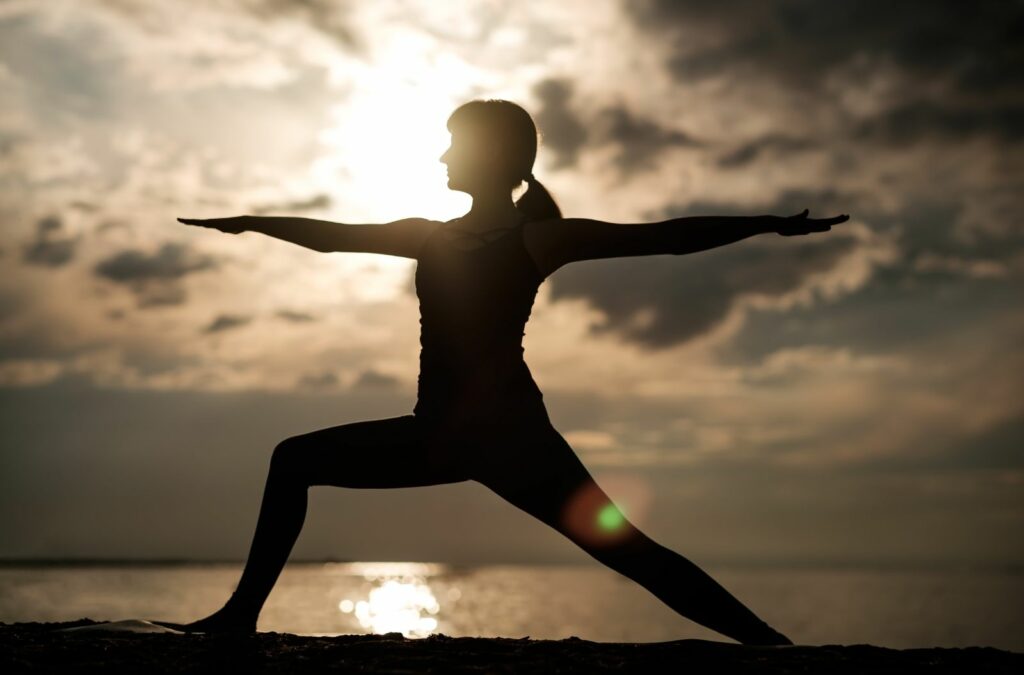
How to Do the Warrior II Pose (Virabhadrasana B)
Before we dive into the step-by-step instructions, let’s take a closer look at the Warrior II pose, including its Sanskrit name and its benefits for your body and mind.
Key Takeaways:
- The Warrior II pose is also known as Virabhadrasana B.
- This yoga asana can help strengthen your legs, open your hips, and improve your balance.
Table of Contents
Understanding the Warrior II Pose
Before attempting the Warrior II pose, it’s important to understand the level of difficulty and the benefits it can offer. This pose is an intermediate to advanced level asana that requires balance, strength, and focus.
Difficulty
The Warrior II pose challenges the body on multiple levels, including strength, flexibility, and endurance. The pose requires you to hold a deep lunge while simultaneously reaching your arms in opposite directions. This can be challenging for beginners or those with limited mobility in the hips or shoulders.
Pose Benefits
Despite its difficulty, there are many benefits to practicing the Warrior II pose. Some benefits include:
- Strengthening of the legs, hips, and core muscles.
- Improvement of balance and stability
- Enhancement of focus and concentration
- Stretching of the hips, groins, and shoulders
Warrior II Pose Cautions
As with any yoga pose, it’s important to practice the Warrior II pose with caution and care. Here are some cautions to keep in mind while practicing:
- Avoid this pose if you have knee or hip injuries.
- Consult a doctor before practicing if you have high or low blood pressure.
- Don’t push yourself beyond your limits. Hold the pose for as long as you comfortably can.
- If you experience any discomfort or pain, come out of the pose immediately.
By understanding the difficulty, benefits, and cautions of the Warrior II pose, you can approach this asana with confidence and safety.
Step-by-Step Instructions for the Warrior II Pose
The Warrior II pose (Virabhadrasana B) is a grounding and empowering asana that can help you strengthen your legs, improve your balance, and focus your mind. Follow these step-by-step instructions to learn how to practice this pose safely and effectively.
- Start in Tadasana (Mountain Pose). Stand tall with your feet together and your arms by your sides. Take a few deep breaths and bring your awareness to your body and breath.
- Step your left foot back. Take a big step back with your left foot, keeping your feet about 4 feet apart. Turn your left foot slightly in, and your right foot out to the right at a 90-degree angle. Align your right heel with your left heel.
- Align your body. Square your hips and shoulders to the long edge of your mat. Keep your spine long and your arms parallel to the floor.
- Bend your front knee. Bend your right knee and track it in line with your right toes. Make sure your knee doesn’t collapse inward or outward.
- Engage your legs and core. Press down firmly through the outer edge of your back foot and engage your back leg. Draw your navel in toward your spine to engage your core and keep your lower back long.
- Extend your arms. Reach your arms out to the sides at shoulder height, with your palms facing down.
- Gaze over your front hand. Turn your head to look over your right fingertips. Keep your gaze steady and your neck long.
- Hold the pose. Stay in the pose for 5-10 breaths, or longer if comfortable. Make sure to breathe deeply and evenly throughout.
- Release the pose. To release, straighten your front leg and bring your arms down to your sides. Step your feet together and come back to Tadasana.
Beginners tips
Remember, the Warrior II pose can be challenging, especially for beginners. Here are some tips to help you practice this asana safely:
- Warm up your body before attempting the pose with some gentle stretching or sun salutations.
- Focus on your alignment, especially your knee and ankle placement.
- Use props such as a block or a strap if you need extra support.
- Take breaks as needed and come out of the pose if you feel any pain or discomfort.
- Practice regularly to build strength, flexibility, and confidence.
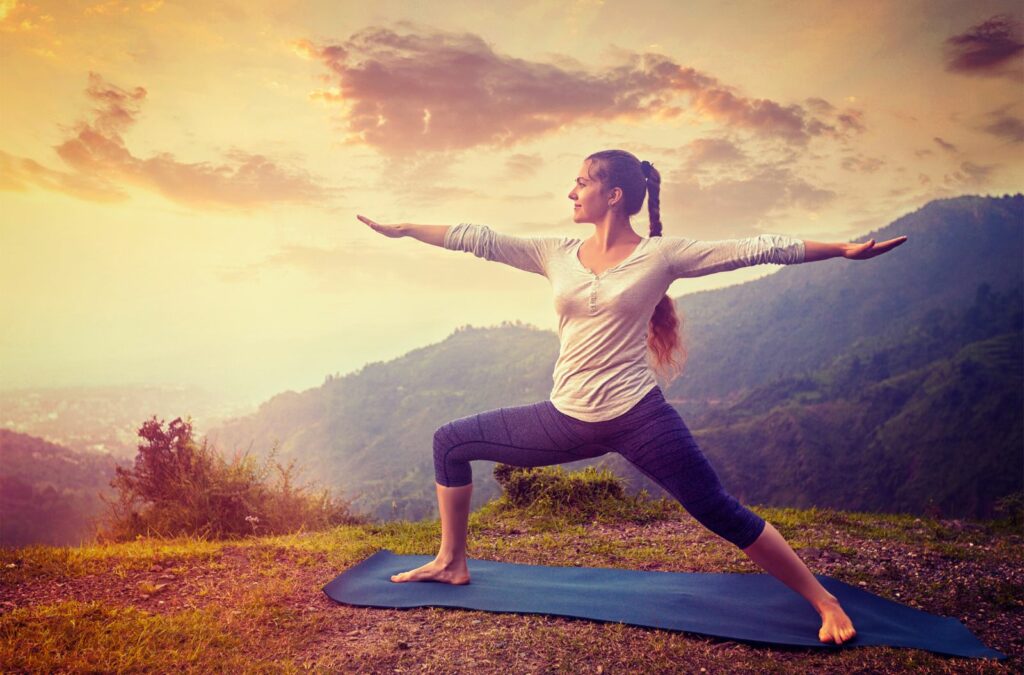
Modifications, Props, and Partnering for the Warrior II Pose
If you have any limitations or want to explore different variations of the Warrior II pose, there are several modifications, props, partnering techniques, and variations that can enhance your practice and make it more accessible.
Modifications and Props
If you have tight hips or knee problems, you can modify the Warrior II pose by widening your stance and turning your back foot slightly inward. You can also shorten the stance to relieve tension in the hips. Additionally, using props like blocks or a chair can help raise the floor and make the pose less intense.
You can also modify the pose by practicing it against a wall, which can help you align your body and reduce any strain on your hip flexors. Another option is to practice with a strap around your front thigh, which can help you lengthen and stabilize your leg.
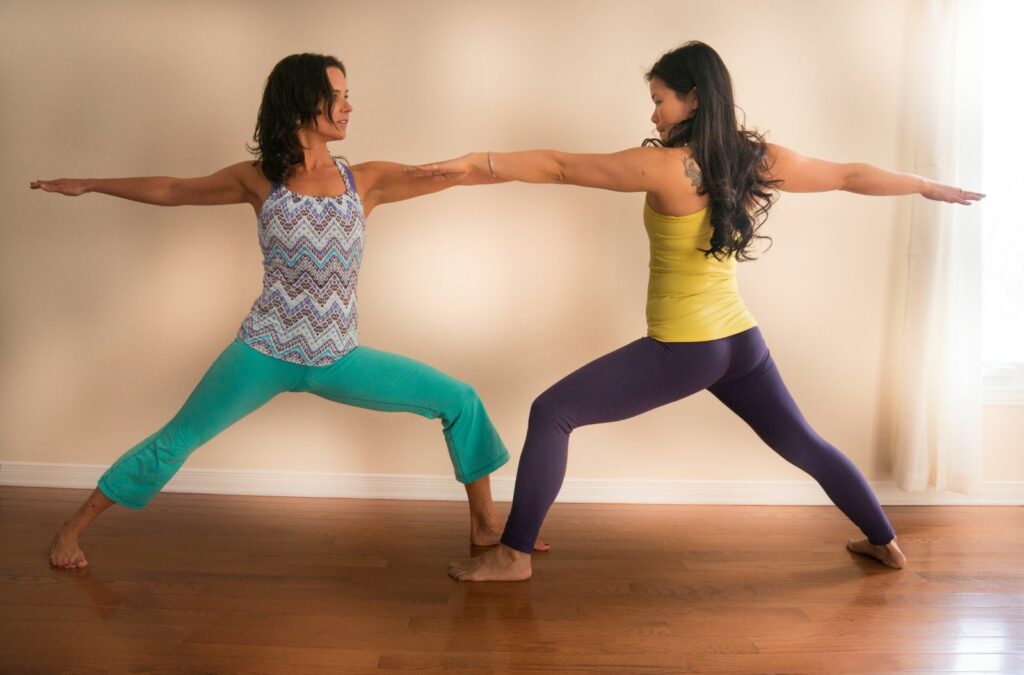
Partnering
Partnering can help you deepen your Warrior II pose and maintain proper alignment. One effective technique is to practice the pose with a partner who stands behind you and gently presses their hands against your back to help you lengthen your spine and open your chest.
You can also practice the Warrior II pose in pairs, facing each other and holding onto each other’s forearms, to help you ground down through your feet and maintain balance.
Variations
There are numerous variations of the Warrior II pose that can challenge you and help you develop strength and flexibility. One variation is the Extended Side Angle pose, where you place your front elbow on your front knee and reach your top arm overhead.
Another variation is the Reverse Warrior pose, where you place your front hand on your front leg and reach your top arm overhead and back towards your back leg. You can also try the Peaceful Warrior pose, where you reach your top arm overhead and back while keeping your front knee bent.
Remember to consult with a yoga teacher if you’re unsure about how to modify or vary your Warrior II pose. With practice, you can find the best modifications and variations that work for your body and enhance your yoga practice.
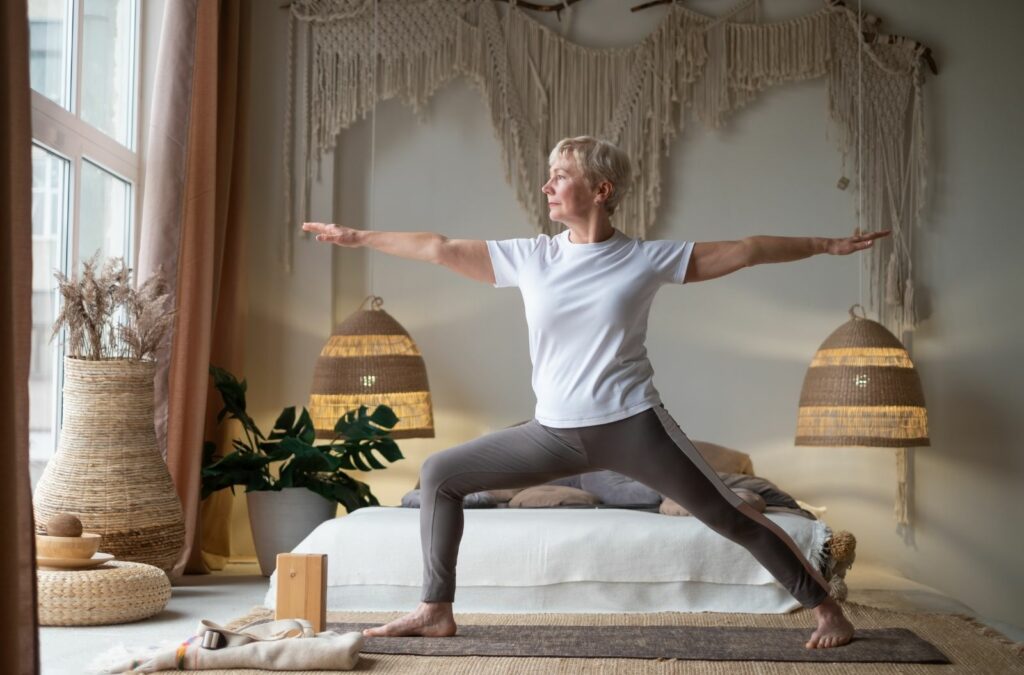
Conclusion
As you can see, the Warrior II pose is a challenging yet rewarding yoga asana that can benefit both your body and mind. With regular practice and proper technique, this pose can help improve your strength, balance, focus, and overall well-being.
Tips for Success
Remember to listen to your body, and never push yourself beyond your limits. Take breaks when necessary, and always warm up properly before attempting any yoga asana. If you’re a beginner, it’s best to start slowly and work your way up gradually.
Also, don’t be afraid to explore modifications, props, and partnering techniques that can help you deepen your practice and make it more accessible. And most importantly, have fun and enjoy the journey!
Thank you for joining us on this journey to empower your body and mind through yoga. We hope you found this guide helpful and informative, and we look forward to sharing more yoga knowledge with you in the future.
Benny Martica
Benny Martica, a certified Hatha Yoga teacher based in Argentina, is a dedicated and passionate advocate of yoga’s transformative power. With a deep commitment to mindfulness and holistic wellness, she empowers her students to find balance and well-being through the practice of yoga. . Her mission is to inspire others on their path to personal growth and self-discovery.
